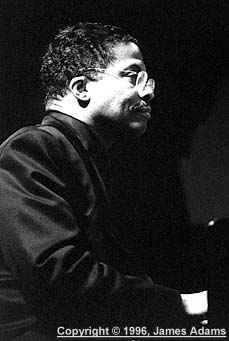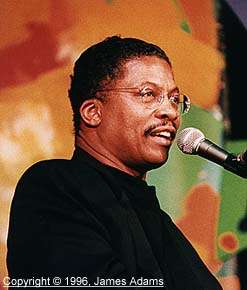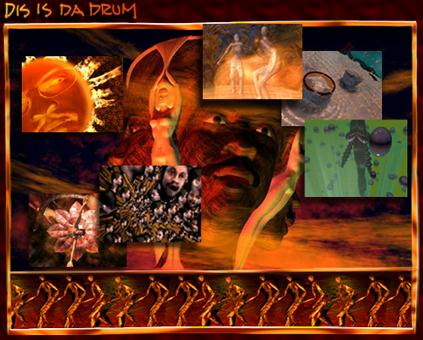Herbie Hancock

BIOGRAPHY
If not for the overwhelming popularity
of Miles Davis, Herbie Hancock might be considered as jazz's most
well-known and popular performer since the 1960's. Eleven of his
albums during the seventies made the charts, with seventeen
albums doing the same between 1973 and 1984, including three
during 1974. These accomplishments alone put him far ahead of any
other jazz musicians of the seventies and beyond. Herbie Hancock
is also considered among jazz's most eclectic players. Throughout
his career, Hancock has embraced everything from bebop to free
jazz, jazz-rock, fusion, funk, instrumental pop, dance, hip-hop,
and world fusion. He is both an excellent accompanist and a
superb soloist, whose praising, voicing, harmonic facility, and
melodic and interpretative skills were quite impressive in the
start of his career, and continue to be so no matter what idiom
or style that is his current focus. Herbie Hancock was born in
Chicago, Illinois on April 12, 1940. He began his musical career
early by beginning piano lessons at the age of 7, but it did not
take him very long to develop his excellent musicianship. By the
age of 11 he had already performed Mozart's D Major Piano
Concerto with the Chicago Symphony. Though encouraged at an early
age to focus on classical music, Hancock's interest soon turned
to jazz. He formed his own jazz ensemble while attending Hyde
Park High School, and there he developed an interest in
electronics that led to his later use of synthesizers, but first
brought him to Grinnel College where he was to major in
electrical engineering. However, by his second year at Grinnel,
the young Hancock changed his major to music. After graduating
from Grinnel in 1960, Hancock, then twenty years old, began
working in jazz clubs in Chicago with Donald Byrd and Coleman
Hawkins until Byrd invited him to join his band and move to New
York. While in New York, Byrd introduce Hancock to several Blue
Note Records executives who offered Hancock his own contract
after witnessing his performance with Byrd's band. This quickly
led to the issuing of Hancock's debut album in 1962, Takin' Off,
which yielded his first top ten hit "Watermelon Man."
It was not long before the talented Hancock began to draw the
attention of the legendary Miles Davis, who extended an
invitation to Hancock to become a member of his new group.

After joining Davis' band in 1963, Hancock's soloing style became
an integral part of Davis' evolving 60's approach. After working
with Davis for a number of years, Hancock decided to form his own
band in the 70's, a sextant that merged jazz, rock, African, and
Indian musical styles. With this band, he began to pioneer a
musical style that would later become known fusion, a musical
style that primarily melded the ideas of funk and rock with jazz.
The Sextant was disbanded in 1973, at which time Hancock formed
his longer lasting band, The Headhunters. With this band, Hancock
experienced significant crossover success with the single
"Chameleon" from the 1973 album Headhunters, and again
in 1983 with "Rockit," a song that implemented the
scratching technique on the turntables long before such a thing
was popularized by the emergence of hip-hop.

Throughout his career, Hancock has recorded several albums for
Blue Note, Columbia, and Warner Bros. He has played with some of
the most prominent musicians in jazz, including Joe Henderson,
Freddie Hubbard, Wyton Marsalis, George Coleman, Johnny Coles,
Bobby Hutcherson, George Genson, and Paul Desmond, among many,
many others. His great versatility as a musician and great track
record will never leave him with any difficulty getting recording
opportunities, for he has continued to retain a high level of
musicianship and attention to stylistic detail throughout his
expansive career.

Links




